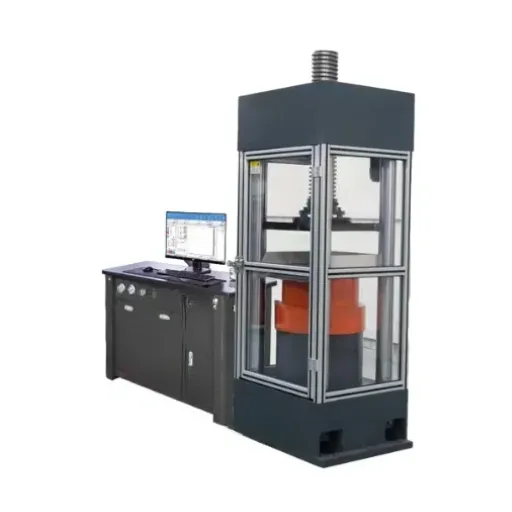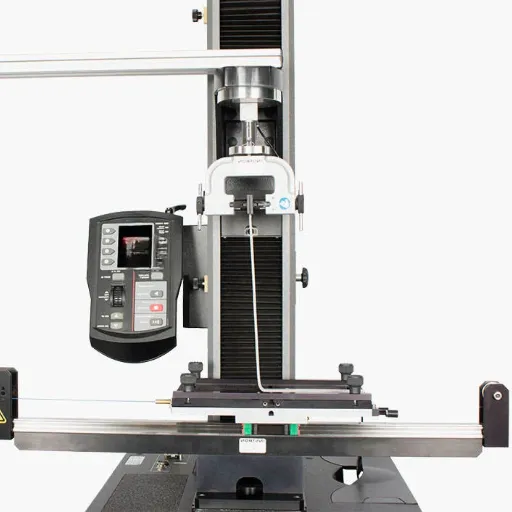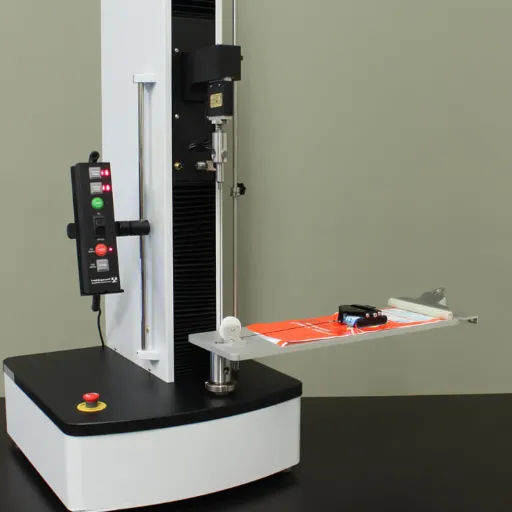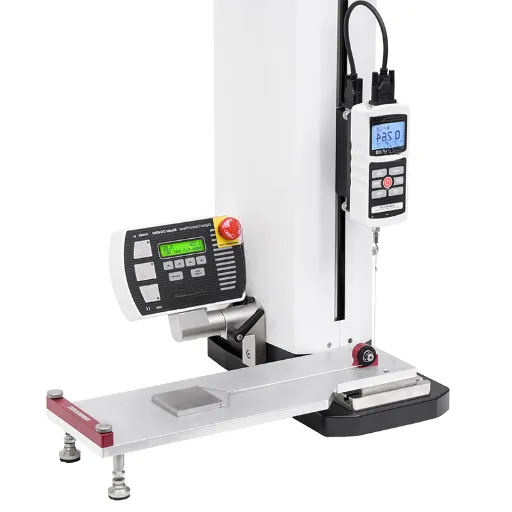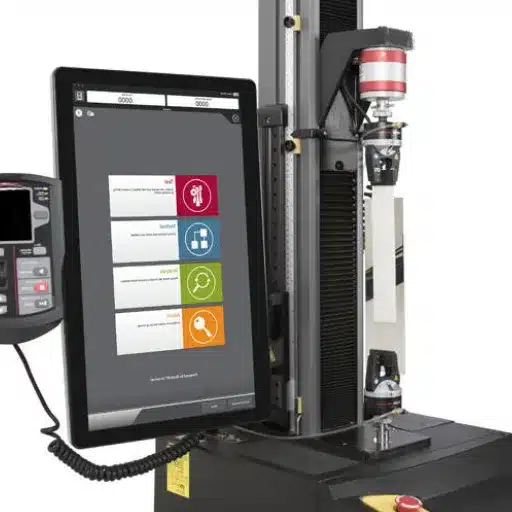With concrete serving as the essential building block for bridges and even skyscrapers, it is indeed a cornerstone of construction globally. How, then, do we guarantee that it matches the safety, durability, and performance requirements? The answer would be the concrete compression test machine, which remains a vital instrument in the fields of construction and engineering. This article centers on how compression testing contributes to the evaluation of the strength and quality of concrete. We will understand the operation of such machinery and also delve into the reasons why they matter, in practical terms, as we explain everything about testing procedures that are central and critical. No matter if you are an engineering expert, a student, or someone who wonders about construction innovations, this article will demonstrate the fundamental principles that enable the construction of stronger and safer structures.
Understanding Compression Testing
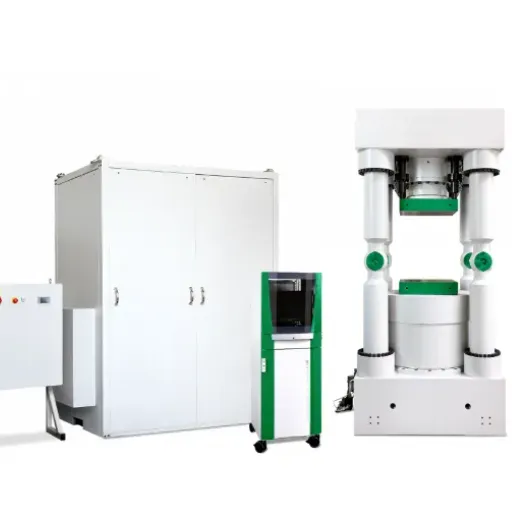
What is Compression Testing?
Compression testing is carried out to understand the behaviour of materials when subjected to compressive forces and to determine how materials respond to compressive forces. It checks the material’s ability to resist crushing loads and provides an insight into compressive strength, elasticity, deformation, and other properties. This testing is crucial in fields where materials encounter such forces, as it verifies that materials behave as expected for their use.
Key Point:
Calibration in compression testing involves ensuring test results are accurate and reliable. It includes the adjustment and verification of testing equipment such as a load cell to meet established standards. This step is important because even minimal errors in force measurement could significantly distort the performance picture of the material. Consistent calibration also ensures test uniformity and adherence to industry and safety regulations.
Typically, the calibration process involves checking the equipment’s readings with a standard, which is usually provided by nationally or internationally accredited labs. This verifies that the testing equipment is in good working order and giving accurate readings. The lack of calibration may lead to unreliable test results and may undermine the safety and quality of materials to be used in different applications. With proper calibration, industries are able to rely on the data collected, which improves safety and aids in better decision-making.
Importance of Compression Tests in Material Testing
The compression test is an important test that helps us understand how strong and durable a material is. It tests the materials to understand if they can sustain a certain load and pressure. It is extremely useful in the construction, automotive, and the aerospace industries, as safety and structural integrity are critical factors in these industries. By knowing how a material will behave when tested under compressive forces, manufacturers and engineers can understand the potential weaknesses and understand if the material would be appropriate for a certain use.
Mechanical Properties
Effective identification of compressive strength, stiffness, and deformation characteristics
Material Selection
Optimization of material selections and designs for safe building use
Quality Control
Compliance with regulatory standards and avoidance of product recalls
Furthermore, compression testing is also helpful for quality control and compliance with the prevailing regulatory standards. Testing materials during their production and development phase allows manufacturers to confirm that the materials comply with the standards and regulations in place. This ensures not only safety and improved performance of the products and materials in the end-use applications but also the avoidance of product recall and the associated costs. It is through reliable and precise compression testing that different sectors are able to uphold the quality of their products and public infrastructures.
Types of Compression Tests
A material’s response to load is studied in detail through compression testing. There are different types of this test and each is appropriate for different uses and material properties. Gaining familiarity with the material helps in choosing proper practices and attaining precise results.
- Uniaxial Test: The sample undergoes testing to establish compressive strength, elastic limit, and failure characteristics by compression along a single axis. A number of materials such as metals, ceramics, and plastics employ this test.
- Compression Shear Test: Pivotal to construction materials such as concrete, as it tests the materials under compression and shear, allowing the study of materials under complex stress conditions.
- Buckling Test: Most relevant for evaluating the structural integrity of beams and columns, testing how materials resist loads without bending or buckling under compression.
Industries ranging from construction to manufacturing rely on the valuable insights each type of compression test provides, which in turn ensure that the different mechanical properties, material selection, design choices, and safety considerations are adhered to.
The Technology Behind Compression Test Machines

Hydraulic Systems in Compression Testing Machines
As the name implies, the functioning of modern compression testing machines depends on the effective working of a hydraulic system. Such a system requires the effective use of hydraulics in the form of pressurized fluid in order to generate the force required to apply pressure to the test specimen in an effective and uniform manner. The testing machine depends on the hydraulics mechanism for the precision and consistency of the results, which helps in the obtaining of effective data on the materials tested under compressive loads.
Core Components of Hydraulic Systems
Hydraulic Pump
Increases fluid pressure
Reservoir
Stores hydraulic fluid
Valves
Controls flow and pressure
Cylinder
Applies force to specimen
Such hydraulic systems are known for their high load capacity and ability to provide ease in the retention of results that are stable and repeatable, even at high loads. Such dependability is such a system is extremely vital in the testing of materials for use in the construction, aerospace, automotive manufacturing, and other critical industries. As with any mechanical system, appropriate and routine maintenance checks of the hydraulic system, such as fluid quality verification and looking for leaks, are required to prolong the system’s precision and life.
Automatic vs Manual Compression Testing Machines
Choosing between automatic and manual compression testing machines involves considering the specific needs of the application, how efficiently operations need to be run, and the overall budget. Each variant has a set of benefits and is best suited to certain scenarios, which makes carefully evaluating the specific requirements of the project all the more important.
| Aspect | Automatic Machines | Manual Machines |
|---|---|---|
| Primary Focus | Accuracy and efficiency | Ease of use and lower cost |
| Best For | High-volume, repetitive testing | Low-volume, infrequent testing |
| Human Intervention | Minimal interference | Full operator discretion |
| Data Collection | Automated and dependable | Manual recording required |
| Maintenance | More complex systems | Simple and trustworthy |
Advancements in Compression Tester Technology
In the past several years, there has been a marked advancement in the technology behind compression testing, largely because of the value precision and automation offer to the testing process. The latest compression testers contain integrated advanced sensors and computer systems that facilitate the achievement of results that are not only accurate but also authenticated. The devices allow the capturing of force, displacement, and deformation of materials, and therefore any crucial information for further material evaluation is not at risk of being lost.
Key Technological Advancements
- Enhanced Automation: Automated systems execute various tests independently, eliminating manual operation needs
- Advanced Analytics: Software simplifies data gathering and analysis, enabling comprehensive reporting
- Energy Efficiency: Modern equipment uses less energy while maintaining performance
- Environmental Focus: Sustainable construction using recyclable materials
Leading Compression Test Machine Manufacturers
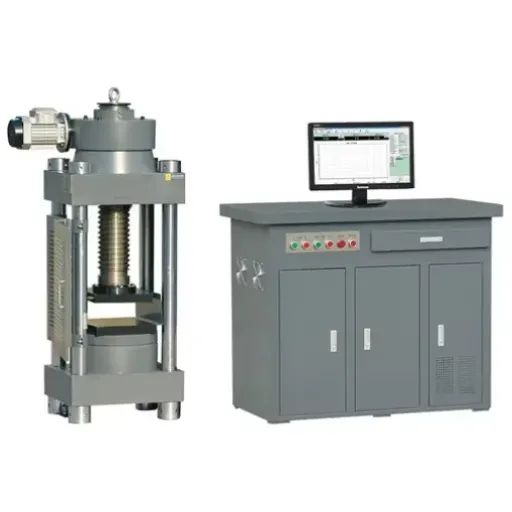
Overview of Top Manufacturers
The strength, longevity, and distortion behavior of materials undergoing force is evaluated through compression testing, which is an important evaluation step. Warranted manufacturers of compression test machines focus on producing these machines with a high level of precision and replicability. The construction, aerospace, and automotive industries, as well as general manufacturing, actively use these machines because they significantly improve product quality and development by giving insights about the behavior of the materials used.
Leading manufacturers of testing machines concentrate on developing equipment that matches international quality and testing standards. Their machines are multifunctional, allowing testing of metals, plastics, ceramics, and even composites. Accuracy is a priority; hence, compression test machines have advanced sensors and software that enable detailed analysis and graphical representation of the data. Industries thus have the information they need to enhance and guarantee the materials they use in terms of performance and safety.
Additionally, leading manufacturers also focus on the ease of use and the ruggedness of the equipment. In order to provide protection against rigorous operational settings, high quality materials are used for constructing the machinery. To enhance operational efficiency and environmental concern, automated systems, integration with digital reporting, and green technologies are implemented. Their role is crucial in advancing material testing machinery, since these companies, with their focus on precision, dependability, and eco-friendliness, continuously improve material testing systems.
Standout Features of Leading Compression Test Machines
Key Features That Define Excellence
- Advanced Sensors & Load Cells: High-precision force measurement with reinforced frameworks for accuracy under high loads
- Material Versatility: Capable of testing metals, plastics, concrete, and composites with adjustable fixtures
- Software Integration: Advanced data analysis, reporting, and real-time test monitoring capabilities
- Eco-Friendly Design: Energy-saving mechanisms combined with high performance and environmental compliance
Comparative Analysis of Manufacturer Offerings
The purpose of compression testing equipment is to examine the strength, endurance, and resistive capacity of materials. In examining the various manufacturers of this equipment, specific details should be focused on, such as the core design goal of the equipment, overload capacity, resolute balance, eco features, and ease of use—in addition to adherence to industry standards.
Precision & Accuracy
Advanced sensor technologies integrated in calibration systems to ensure minimal deviation during testing with dependable high-performance equipment.
Software Compatibility
Intuitive controls, testing automation, and integration capabilities for seamless data collection, evaluation, and archiving.
Sustainability Focus
Energy-efficient components and adherence to global eco-friendly standards while maintaining advanced functionalities.
Applications of Concrete Compression Test Machines
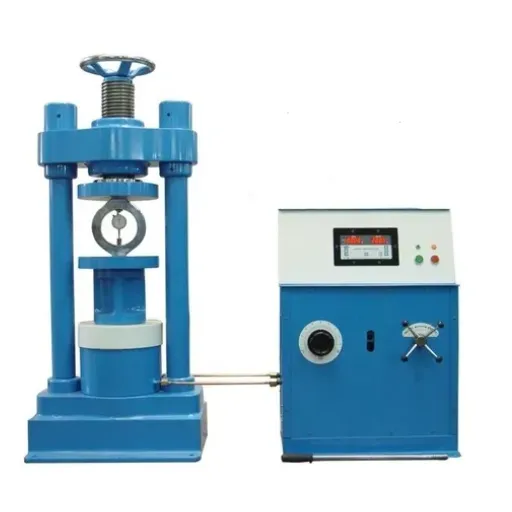
Role in the Construction Industry
The construction industry relies heavily on concrete compression test machines, as they ensure the long-term safety of a concrete structure. Knowing the compressive strength of a concrete mixture is important in calculating the loads it can safely bear, and this information is crucial in the design and quality control of construction projects. Indeed, concrete strengths of different mixtures are tested for conformity to requirements to ensure that the specified mixture is appropriate for the job.
Construction Testing Process
- Representative samples taken from concrete batch
- Samples cured under controlled conditions
- Testing at required strength intervals
- Results evaluation and corrective actions if needed
Concrete compression testing also supports compliance with regulatory standards and building codes. In critical regions, specified strength values are enforced for materials used in structural components such as foundations, beams, and columns. Compression testing provides proof of compliance for all parties concerned, ranging from contractors, inspectors, to property owners. Such dependable inspection procedures enhance the safety of the infrastructure while assuring the optimum performance of the material over the structure’s lifecycle.
Applications in Aerospace and Automotive Sectors
The aerospace and automotive industries have unique materials testing needs, and compression testing helps satisfy these needs. The aerospace industry uses compression testing to guarantee that metals, composites, and polymers not only meet the set standards but are also flight-worthy, even under the most extreme forces and pressures. This testing is crucial for flight safety because the components of an aircraft, such as the wings, the body, and the landing gear, undergo compression testing to verify their performance under extreme pressures, making sure that they are strong, durable, and safe.
| Industry | Applications | Key Benefits |
|---|---|---|
| Aerospace | Wings, body, landing gear testing | Flight safety assurance |
| Automotive | Tires, suspension, frame materials | Dynamic load resistance |
| Both Industries | Advanced lightweight composites | Improved fuel/energy efficiency |
Both industries also benefit from the research and development efforts that compression testing enables, such as testing for higher-efficiency advanced materials. For instance, testing aids in the adoption of lightweight composites that improve fuel efficiency or energy efficiency in vehicles and aircraft. Continuous innovation and compression testing ensure that higher and newer safety standards are met; they also help with compliance in aerospace and automotive engineering.
Material Testing across Various Industries
Compression testing plays a special role in understanding materials in different industries in relation to their compressive load behavior. This type of testing ensures that materials can withstand any forces and pressures they may be subjected to during their usage. Testing in this manner ensures the strength, durability, and deformation characteristics of materials are assessed. With this kind of evaluation, possible performance issues of materials can be identified. Compression testing is one of the core testing materials in product development and quality assurance.
Construction Industry
Testing of bricks, concrete, and metals to verify compressive strength for durability and structural integrity, ensuring materials can bear design loads.
Packaging Industry
Testing cardboard and plastic containers to verify strength sufficient for protecting goods during storage and transportation.
Transportation
Components subjected to severe mechanical stresses and high pressures require certification for performance, safety, and hazard elimination.
Compression testing is one of the core activities that foster innovation, safety, and productivity in many other industries.
Selecting the Right Compression Test Machine Manufacturer
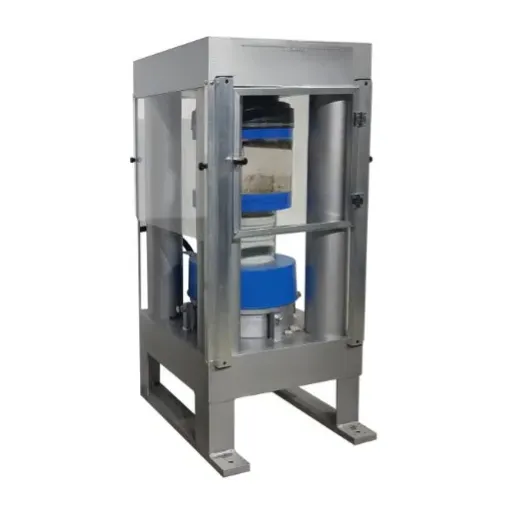
Key Factors to Consider
When choosing a compression test machine manufacturer, quality and precision should be your primary focus. Seek out manufacturers with a track record of producing high-accuracy and reliable machines, as such features are crucial for effective materials testing under compression. With proper reliability, a test machine can deliver accurate and consistent test results, thereby allowing better evaluation of a material’s strength and performance in practical use.
Essential Selection Criteria
Quality & Precision
Track record of high-accuracy and reliable machines for consistent test results
Testing Functions
Multi-functional capabilities for various materials and sector requirements
Support Services
Maintenance, calibration, training, and technical support availability
The scope of testing functions provided by the machine is yet another significant concern. Make sure that the manufacturer offers the machines that can deal with materials and tests relevant to your sector. With multi-functional capabilities, a machine can shift between load capacities, test speeds and even data acquisition techniques, which can greatly help address the diverse testing requirements without the need for additional modules.
To conclude, look into the maintenance, calibration, training and other support services provided by the manufacturer. The manufacturer should be well-regarded and provide additional customer services for proper maintenance and accuracy of the machines for the training and calibration of the machinery. Proper technical support and guaranteed spare parts supply help maintain the machinery and reduce the testing downtimes and ensure the test results are accurate.
Evaluating Product Quality and Customer Support
When assessing the quality and performance of compression testing machines, it is imperative that they conform to industry standards and demonstrate compliance through certifications. Such machines should be constructed of sturdy materials that preserve accuracy even with constant use. Additionally, the testing equipment should be checked for compliance with the specific regulations in place for the equipment, as this will greatly increase the trustworthiness and quality concerns of the equipment.
Quality Assessment Checklist
- ✓ Industry standards compliance and certifications
- ✓ Sturdy materials and construction quality
- ✓ Accuracy preservation under constant use
- ✓ Comprehensive customer care and technical support
- ✓ Training resources and operator skill development
Finally, the manufacturer’s training aid resources should not be overlooked. Good service providers are known to conduct training sessions meant to equip the operators with the skills necessary in handling the compression testing machine. Inadequate training may lead to equipment malfunctioning and shorten its useful life. Proper care also ensures that the test data is valid. Without a comprehensive aid, it is difficult to combine the backup customers support and the good product quality to guarantee the testing equipment manufacturer objectives are achieved.
Price Considerations and Value for Money
Assessing the price of a compression testing machine requires a detailed look at its features relative to its cost. A cheaper machine may be tempting to purchase in the short run but may incur higher operational and maintenance charges down the line. On the other hand, quality machines come with test accuracy and offer reliable durability and service life, which quality machines offer, may cost more initially. In the long run, they offer better value for money.
| Cost Factor | Short-term Impact | Long-term Value |
|---|---|---|
| Initial Purchase Price | Higher upfront investment | Better durability and reliability |
| Advanced Features | Additional cost | Increased productivity and efficiency |
| Support Services | Service contract costs | Lower downtime and fewer repairs |
| Training & Warranties | Training investment | Proper usage and extended equipment life |
Another important factor that contributes to the value for money with respect to machines is the range of features and capabilities offered. For example, data logging automation or an intuitive user interface proves to be productive and much easier to operate. These advanced features use both labour and time more efficiently, and in the long run, prove to be cost-effective, thus justifying the additional price.
Lastly, support services, training, and warranties must also be included in the price evaluation. Comprehensive customer support and training guarantee that proper usage and maintenance practices are followed, which means lower downtime and fewer repairs. Selecting a manufacturer that prioritizes quality service along with the product ensures that the investment continues to provide returns throughout its life. In the end, a well-informed purchasing decision is one that considers long-term advantages and reliability.
Frequently Asked Questions (FAQ)
Q: What is the purpose of compression testing machines?
A: Using controlled loads, compression testing machines determine the compressive strength of materials like concrete and other industrial materials. Their role is crucial in quality testing in various industries.
Q: How is a compression testing machine different from a universal testing machine?
A: Though universal testing machines offer the added functionality of performing tensile and compression testing, specialized testing machines provide compression testing only. Such machines find use in materials testing where functionalities are limited.
Q: What is the standard that compression testing machines should adhere to?
A: Because compression testing machines are expected to produce accurate results, they should follow ASTM or ISO standards. This ensures that the machines follow the test, as well as machine, parameters that suit the appropriate solutions.
Q: Can compression testing machines be fully automatic?
A: Automation and efficiency improvements are hallmarks of modern testing facilities, and compression testing machines are no exception. Fully automatic compression machines not only reduce human intervention but also enhance testing accuracy.
Q: How do hydraulic universal testing machines benefit testing?
A: Hydraulic universal testing machines excel in handling heavy loads and offer excellent process control. This makes them particularly useful for testing concrete beams and cylinders, where understanding strength and deformation characteristics is critical.
Q: What processes do manufacturers follow to maintain the quality of compression testing machines?
A: In order to maintain the quality of compression testing machines and retain the reliability of the performance of such machines, their manufacturers and suppliers comply with international standards, advanced testing technologies, and rigorous quality control processes.
Q: What ranges of materials can be tested using compression testing machines?
A: The materials tested using compression testing machines include hardened concrete, sheet metals, and other composites. Such machines help determine the compressive strength and performance of such materials.
References
- Compression Testing Machines – Lansmont
Lansmont offers precision-engineered compression testing machines for packaging strength tests. - Concrete Compression Machines – Gilson
Gilson provides a range of concrete compression machines for strength testing. - Concrete Compression Machines – Humboldt
Humboldt specializes in machines for testing the compressive strength of concrete structures. - Automatic Concrete Compression Machines – Gilson
Offers fully automatic machines for comprehensive strength tests on various concrete specimens.

